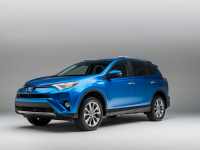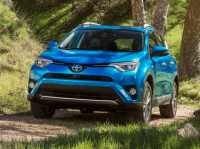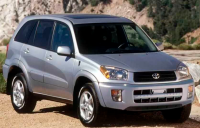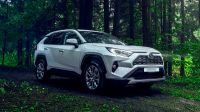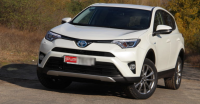Japanese capacity vs Korean equipment - which will prove more convincing? Tough question! Here's another one! Which is prettier: the Kia Sportage or the Toyota Rav 4?
The year 2015 saw an upgrade of both models. Toyota presented a restyling of the famous Rav 4 crossover, while the Koreans have already released the 4th generation Sportage. Let's try to compare the two cars as objectively as possible and see which is better for the buyer.
Appearance
As you have already realised, the design of both models has turned out to be controversial. In 2012, a new generation of the Toyota Rav 4 was released, whose appearance was greeted extremely negatively. Three years later, the Japanese company introduced a redesigned version of its crossover to the world. Work on errors has turned out, but "smack" from the previous body has remained. Therefore, it took a while to get used to the updated exterior.
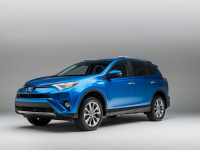 But overall, the car has acquired a more aggressive look, created by the narrowed headlights and raised logo grille, as well as the massive bumper with pointed air intakes.
But overall, the car has acquired a more aggressive look, created by the narrowed headlights and raised logo grille, as well as the massive bumper with pointed air intakes.
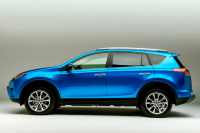 Complaints remain about the design of the stern and, separately, the tailgate. However, compared to the questionable 2012 bodywork, the restyling has taken a step forward.
Complaints remain about the design of the stern and, separately, the tailgate. However, compared to the questionable 2012 bodywork, the restyling has taken a step forward.
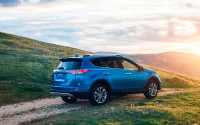 With the Kia Sportage, the situation is just the opposite. It is the stern and the profile of the car that are flawless. At the rear, there are narrowed headlights with LED lines reminiscent of the BMW i8 optics.
With the Kia Sportage, the situation is just the opposite. It is the stern and the profile of the car that are flawless. At the rear, there are narrowed headlights with LED lines reminiscent of the BMW i8 optics.
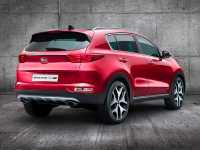 Together, all the rear and side details have created an exceptionally sporty look that looks attractive and complete.
Together, all the rear and side details have created an exceptionally sporty look that looks attractive and complete.
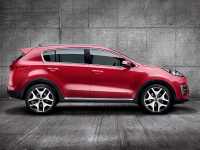 But the car's 'face' is perplexing. How the sporty, sleek profiles fit in with what's at the front.
But the car's 'face' is perplexing. How the sporty, sleek profiles fit in with what's at the front.
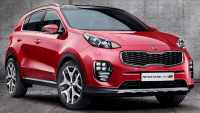 The front headlights are too convex and rounded to blend in with the aggressive look, while the radiator grille resembles the mouth of a monster.
The front headlights are too convex and rounded to blend in with the aggressive look, while the radiator grille resembles the mouth of a monster.
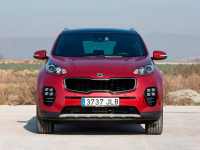 And that's not being picky. The little things are crucial because they create the image and visual perception of the car, and those in turn have a direct impact on sales numbers.
And that's not being picky. The little things are crucial because they create the image and visual perception of the car, and those in turn have a direct impact on sales numbers.
For the sake of fairness, it's worth noting that some liked the new Kia design, as well as the appearance of the 2012-2013 Rav 4. But that's more of an exception to the rule.
Interior and options
In general we want to say that despite the different origins, the new Sportage and the Rav 4 surprisingly similar. They have the same advantages and disadvantages, and then you'll see that.
Both cars are superbly equipped. Toyota RAV4 or Kia Sportage has a wealth of technical equipment not available even in the top versions of other crossovers in its class. Among the highlights are the lane-keeping system with understeer and the automatic parking system. In the more expensive all-wheel-drive versions, you also get AutoHold, hill descent assistant and inter-axle clutch lock.
At the rear, there's a handy camera with dynamic marking. This means that when you turn the steering wheel, the markings will change direction, calculating the position of the car's body while driving to one side or the other.
The 2017 Sportage's cabin has plenty of buttons to control a large number of options, but they're implemented ugly. In the middle of the central console there is not a multimedia screen, as it is accepted in modern cars, but a mountain of buttons. A mountain of buttons!
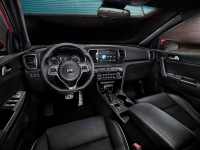 At the very centre are several rows of different keys, which turn the front of the cabin into a computer keyboard rather than a car console. And the coveted screen, though it has acquired good detailing and an attractive navigation system, is located in the upper part of the panel and has a criminally small diagonal. Such ergonomics does not match the interior of the car for 2 million roubles.
At the very centre are several rows of different keys, which turn the front of the cabin into a computer keyboard rather than a car console. And the coveted screen, though it has acquired good detailing and an attractive navigation system, is located in the upper part of the panel and has a criminally small diagonal. Such ergonomics does not match the interior of the car for 2 million roubles.
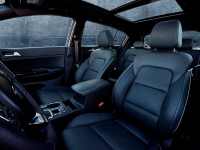 Paradoxically, the Toyota Rav 4 has the same points - rich equipment, but controversial interior design. The advantage of the Japanese crossover is the presence of LED front optics (in Kia Sportage there is bi-xenon at the front even in the maximum configuration) and the all-round vision system. There are cameras installed all around the perimeter of the car, which project the image into a single three-dimensional model and show the finished picture on the display. This helps you spot even minor obstacles when parking.
Paradoxically, the Toyota Rav 4 has the same points - rich equipment, but controversial interior design. The advantage of the Japanese crossover is the presence of LED front optics (in Kia Sportage there is bi-xenon at the front even in the maximum configuration) and the all-round vision system. There are cameras installed all around the perimeter of the car, which project the image into a single three-dimensional model and show the finished picture on the display. This helps you spot even minor obstacles when parking.
There are a few significant complaints about the interior. The first complaint is about ergonomics. A part of the buttons, including climate controls and a key of a sports mode, is in blind zone from the driver. They are hidden under the convex part of the centre console, which continues up to the air vents at the passenger door.
The second point of contention is the convex part itself, which is wave-shaped. It doesn't fit in with the austere style of the prestige crossover. The third criticism concerns the materials of trimming. The top part of a forehead is made of a rigid plastic which is not very pleasant to the touch. Again there is a feeling of discrepancy of the cost, class and quality of the interior.
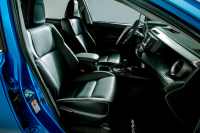 The second row is spacious enough in both vehicles. Both the 2018 Rav 4 and Sportage have a wide recline function for the rear seatback. There's plenty of space, so you can sit back and stretch your legs out.
The second row is spacious enough in both vehicles. Both the 2018 Rav 4 and Sportage have a wide recline function for the rear seatback. There's plenty of space, so you can sit back and stretch your legs out.
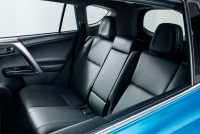
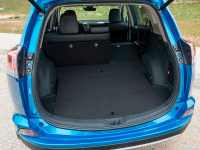 Both crossovers are equipped with a power tailgate. Incidentally, Toyota has a height-adjustable luggage compartment opening. Particularly convenient for low drivers and in low-ceilinged garages.
Both crossovers are equipped with a power tailgate. Incidentally, Toyota has a height-adjustable luggage compartment opening. Particularly convenient for low drivers and in low-ceilinged garages.
In volume of a luggage compartment, the 'Korean' is obviously inferior to its opponent: 491 litres against 577 litres. However, under the floor of Rav 4 there is a spare wheel, and in more complete versions of Kia - a full-sized wheel.
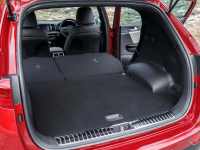 Steering and dynamics
Steering and dynamics
As many may recall, the 2012-2013 Rav 4 had a particularly stiff suspension. The restyling has received an upgrade to the running gear and softer handling over bumps. But Toyota still falls short of the premium class.
As regards dynamics, Rav 4 is rather fast car even with a variator gearbox, despite its "trolleybus" acceleration. In the mode "Sports" the variator starts to imitate "automat", creating sensation of switching on gears. And the engine accelerates more lively.
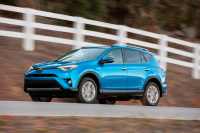 What the Sport mode doesn't affect is the stiffness of the steering wheel. At the zero mark the steering wheel turns well, but it becomes too rigid at further revolutions. Nevertheless, it does not prevent the car to enter turns accurately.
What the Sport mode doesn't affect is the stiffness of the steering wheel. At the zero mark the steering wheel turns well, but it becomes too rigid at further revolutions. Nevertheless, it does not prevent the car to enter turns accurately.
The new generation of Sportage 2016 also has a tight steering wheel. Moreover, it is less informative than in Toyota. It is more difficult to feel the car's behaviour on the road. Still, the Koreans have yet to catch up with their competitors in terms of achieving driver-vehicle connectivity. As in the case of the Rav 4, the Kia does a great job of turning and shifting quickly between lanes without holding up the rear end of the body.
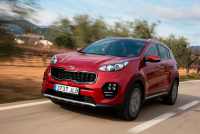 The automatic gearbox on the Korean works smoothly and quickly. It doesn't hinder you from picking up speed. The transmission works especially quickly in the "Sport" mode. But the behavior of the motor does not change thus. By the way, in comparison with its opponent noise isolation of Kia is noticeably better, than in Japanese crossover.
The automatic gearbox on the Korean works smoothly and quickly. It doesn't hinder you from picking up speed. The transmission works especially quickly in the "Sport" mode. But the behavior of the motor does not change thus. By the way, in comparison with its opponent noise isolation of Kia is noticeably better, than in Japanese crossover.
Options
The April 2018 Kia Sportage is available on the Russian market in packages with three engine types:
2.0 litre petrol. (150 hp);
Diesel 2.0L. (185 hp);
Petrol 1,6 litre. (177 hp).
The petrol 2-litre motor is available with front-wheel drive and all-wheel drive. The other engine types are only available on all-wheel drive versions
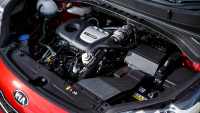 The 1.6 litre turbocharged engines come with the 7DCT gearbox, a Korean-made dual-clutch robot which is the answer to the German DSG.
The 1.6 litre turbocharged engines come with the 7DCT gearbox, a Korean-made dual-clutch robot which is the answer to the German DSG.
The Toyota is also available with 3 types of internal combustion engines, one of which is diesel.
The petrol engine is 2.0 liters. (146 hp);
2.2 litre (150 hp) diesel;
2.5 litre (180 hp) petrol.
The two-litre version is complemented by a 6-speed manual or variator. The other variants come with a 6-speed gearbox.
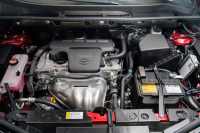 What to buy?
What to buy?
As we've said, both cars are remarkably similar: interior design issues, questionable exterior styling, but superior technical equipment and high passenger comfort. The Toyota wins slightly on capacity, while the Kia has lane-keeping systems with rollover and automatic parking, which the Rav 4 doesn't have.
On the average, prices of Sportage are more expensive than similar complete sets of Toyota by 25-30 thousand roubles. But at the cost of the car in 2 million such difference is hardly taken into account. Therefore the comparison of other parameters will help in making a choice. But if the cars are approximately equal, is it worth overpaying? Besides if you decide who is more reliable, the answer is obvious - the Toyotas don't break! Finishing the comparison, it is difficult to define the unequivocal leader, and everyone will make their choice based on their own goals and priorities. But one thing is certain - both cars are worth their money!
